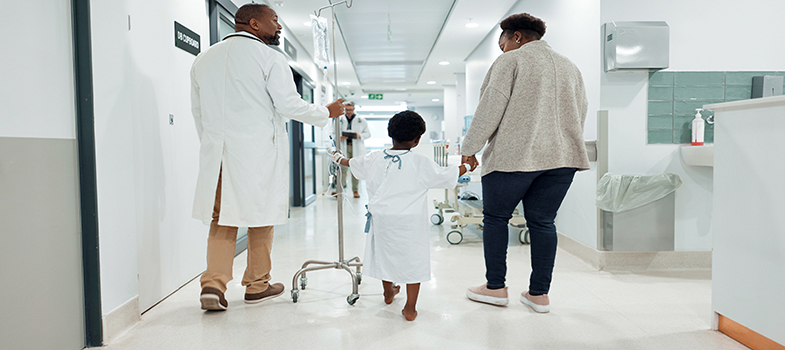4 The social drivers of AMR
In this section you will explore equity in AMR and link this to a people-centred approach to health.
While AMR is a natural process that happens over time, its emergence and spread is accelerated by human activity or caused by non-completion or non-recommended use of antimicrobials to treat, prevent or control infections in humans, animals and plants.
Please note: In this course the term ‘misuse’ of antibiotics, which puts blame on individuals, has been avoided. This course hopes to demonstrate that non-completion or non-recommended use of antibiotics is largely due to harmful power structures that affect the decisions that individuals can make when accessing treatment for themselves or their animals.
Socioeconomic challenges and inequities affect people’s experience of AMR, from exposure to infection to diagnosis and treatment. This is illustrated in Table 2, which shows the World Health Organization’s (WHO) people-centred approach to addressing AMR in human health (WHO, 2023). A focus on the social determinants of health is important because it enables an understanding of the AMR-specific health challenges that people face.
Many of these social challenges are equally relevant to animal health, for example in how they affect access to vaccines for animals and animal health worker training on AMR.
| Challenge | System challenges | People’s challenges |
|---|---|---|
| Prevention of infection |
|
|
| Access to health services |
|
|
| Diagnosis |
|
|
| Treatment |
|
|
Footnotes
Infection prevention is important in both communities and healthcare facilities and continues throughout the journey. Treatment includes the continuous care that might be required for an AMR infection. The list of challenges may not be exhaustive or applicable to all countries. OTC = over-the-counter; IPC = infection, prevention and control.The impact of the inequities illustrated in Table 2 can be seen in the global inequitable burden of AMR. Up to 90% of deaths from AMR occur in the Global South (Mendelson et al., 2024). These contexts often experience high rates of infectious disease, challenges in access to healthcare and global inequities relating to the supply of vaccines and antimicrobials.
For example, in sub-Saharan Africa nearly 1 in 1000 deaths are already associated with bacterial AMR, compared with only half as many in high-income countries (Antimicrobial Resistance Collaborators, 2022). Within countries, the AMR burden is also unequally distributed – but there is no detailed data on how due to the absence of analysis of AMR data disaggregated by gender and other equity-related factors at a national level.
You can learn more about the burden of AMR and how it is measured in the course The health and economic burden of AMR.
3.2 Intersectionality




